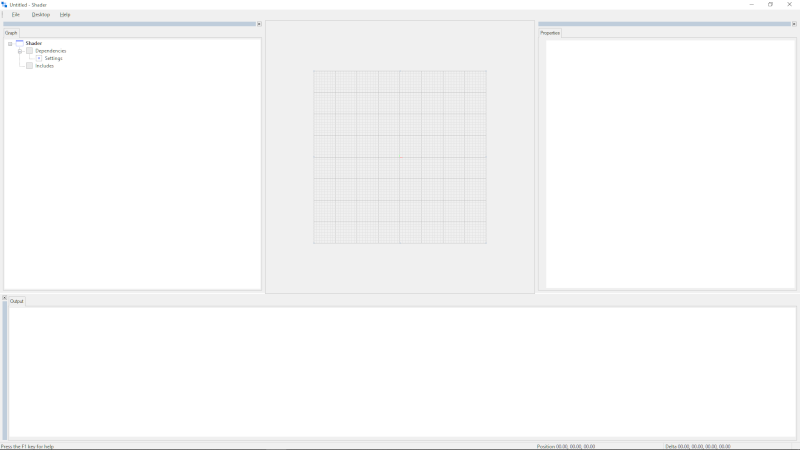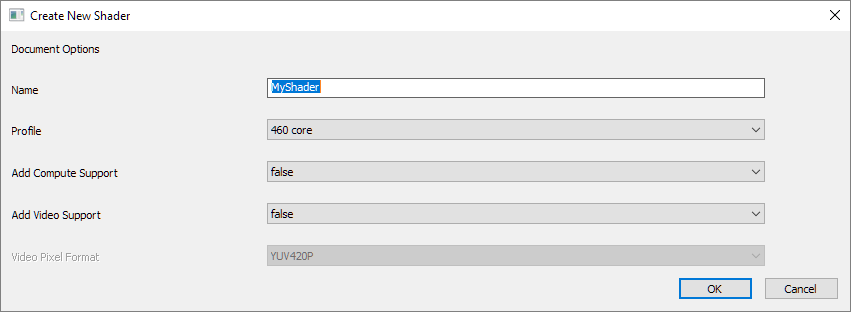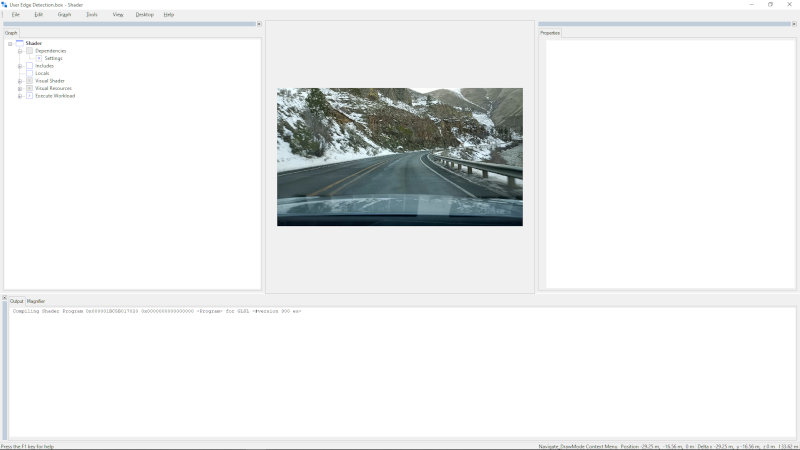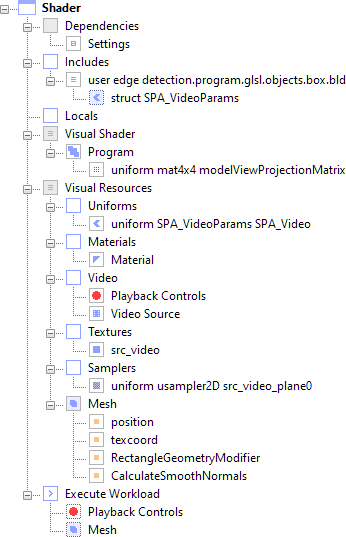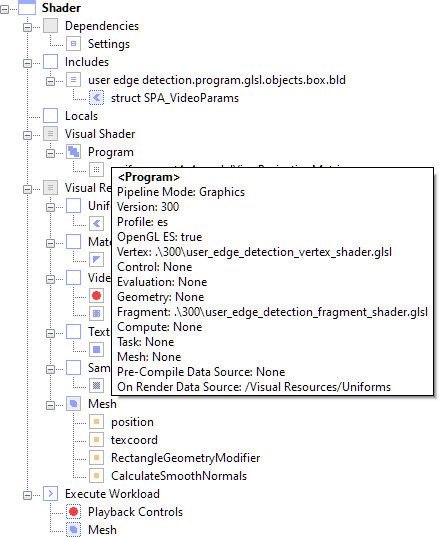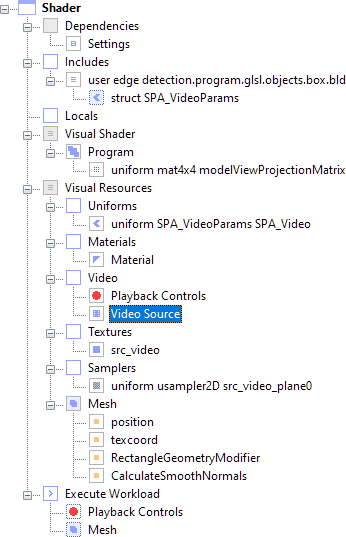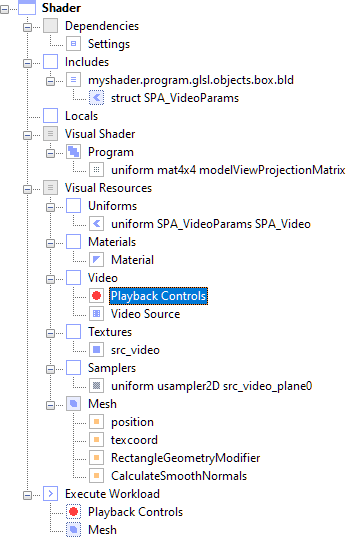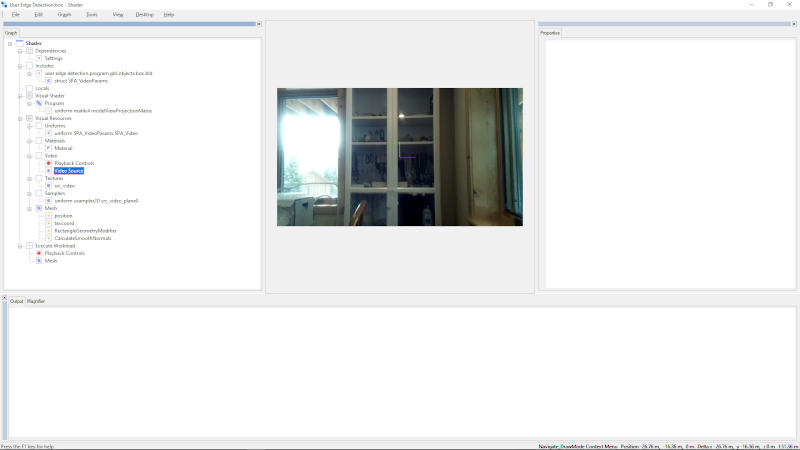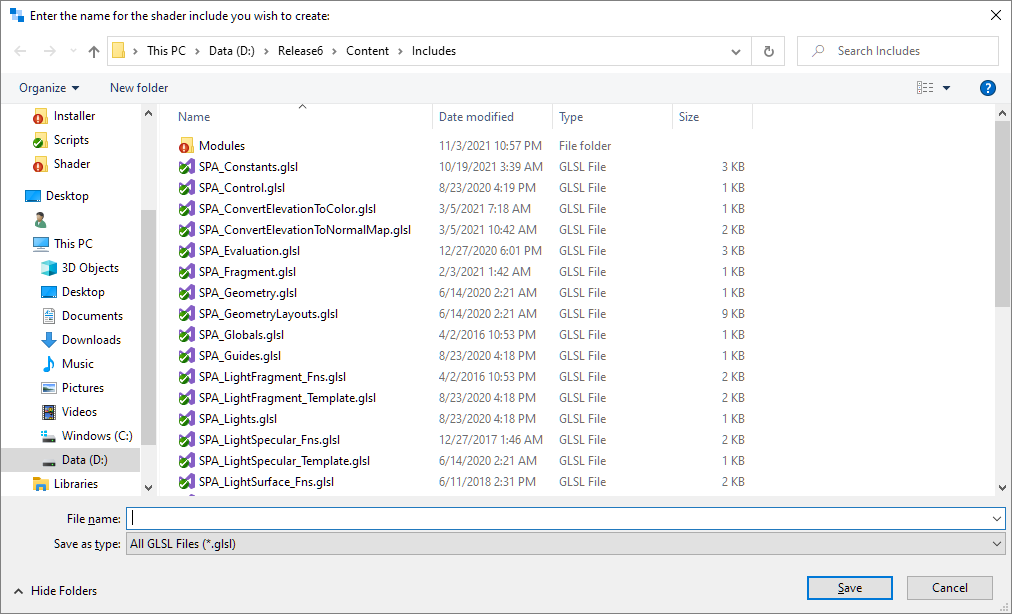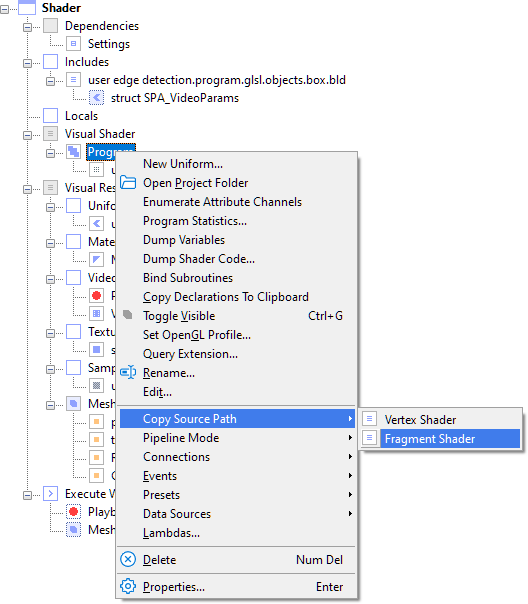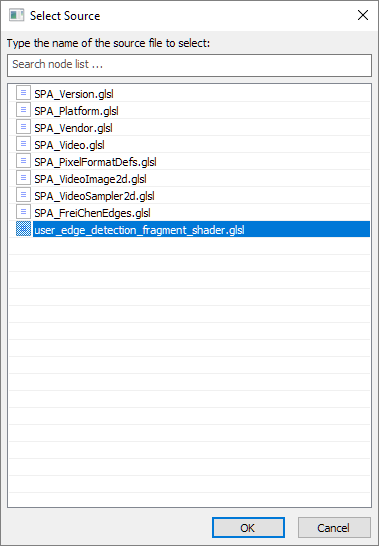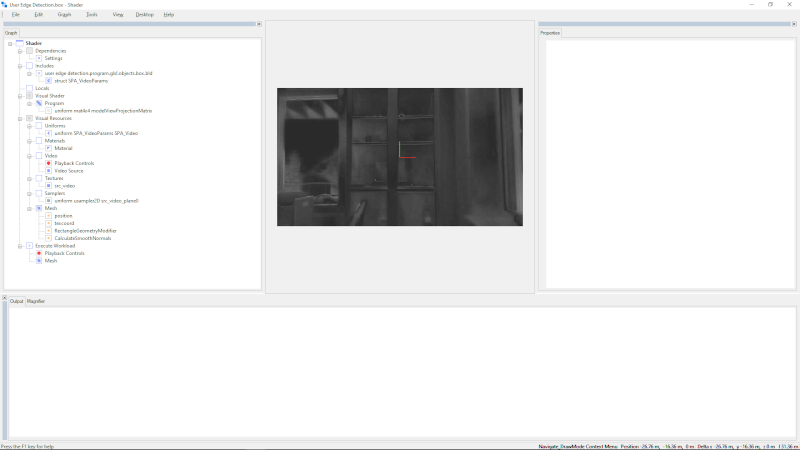Copy the following shader code into the empty SPA_UserSobelEdges.glsl.
Copy Text To Clipboard
#ifndef SPA_USER_SOBEL_EDGES
#define SPA_USER_SOBEL_EDGES
const int KERNEL_SIZE = 9;
float u_kernel[KERNEL_SIZE] = float[KERNEL_SIZE](
-1.0, -2.0, -1.0,
0.0, 0.0, 0.0,
1.0, 2.0, 1.0
);
#define SAMPLE_PIXEL( _x, _y ) ( SPA_VideoSamplePixel( image, luma_coord + ivec2( _x , _y ), u_coord, v_coord ) )
// Include load/store functionality for specific sampler/image types.
#if SPA_GL_VENDOR != SPA_GL_INTEL && __VERSION__ >= 330
vec4 SPA_Sobel( layout( r8ui ) uimage2D image, vec2 coords )
#else
vec4 SPA_Sobel( usampler2D image, vec2 coords )
#endif
{
mat3 I;
float cnv[9];
ivec2 luma_coord;
ivec2 u_coord;
ivec2 v_coord;
uvec3 src_color;
SPA_VideoGetYuvCoords( image, coords, luma_coord, u_coord, v_coord );
float dx = ( length( vec3( SAMPLE_PIXEL( -1, -1 ) ) / 255.0 * u_kernel[0] +
vec3( SAMPLE_PIXEL( -1, 0 ) ) / 255.0 * u_kernel[1] +
vec3( SAMPLE_PIXEL( -1, +1 ) ) / 255.0 * u_kernel[2]) -
length( vec3( SAMPLE_PIXEL( +1, -1 ) ) / 255.0 * u_kernel[0] +
vec3( SAMPLE_PIXEL( +1, 0 ) ) / 255.0 * u_kernel[1] +
vec3( SAMPLE_PIXEL( +1, +1 ) ) / 255.0 * u_kernel[2] ) );
float dy = ( length( vec3( SAMPLE_PIXEL( -1, -1 ) ) / 255.0 * u_kernel[0] +
vec3( SAMPLE_PIXEL( 0, -1 ) ) / 255.0 * u_kernel[1] +
vec3( SAMPLE_PIXEL( +1, -1 ) ) / 255.0 * u_kernel[2]) -
length( vec3( SAMPLE_PIXEL( -1, +1 ) ) / 255.0 * u_kernel[0] +
vec3( SAMPLE_PIXEL( 0, +1 ) ) / 255.0 * u_kernel[1] +
vec3( SAMPLE_PIXEL( +1, +1 ) ) / 255.0 * u_kernel[2] ) );
float val = length( vec2( dx, dy ) );
return vec4( val, val, val, 1.0 );
}
// !SPA_USER_SOBEL_EDGES
#endif
This is a fairly basic filter, but it will work very well for this example.
